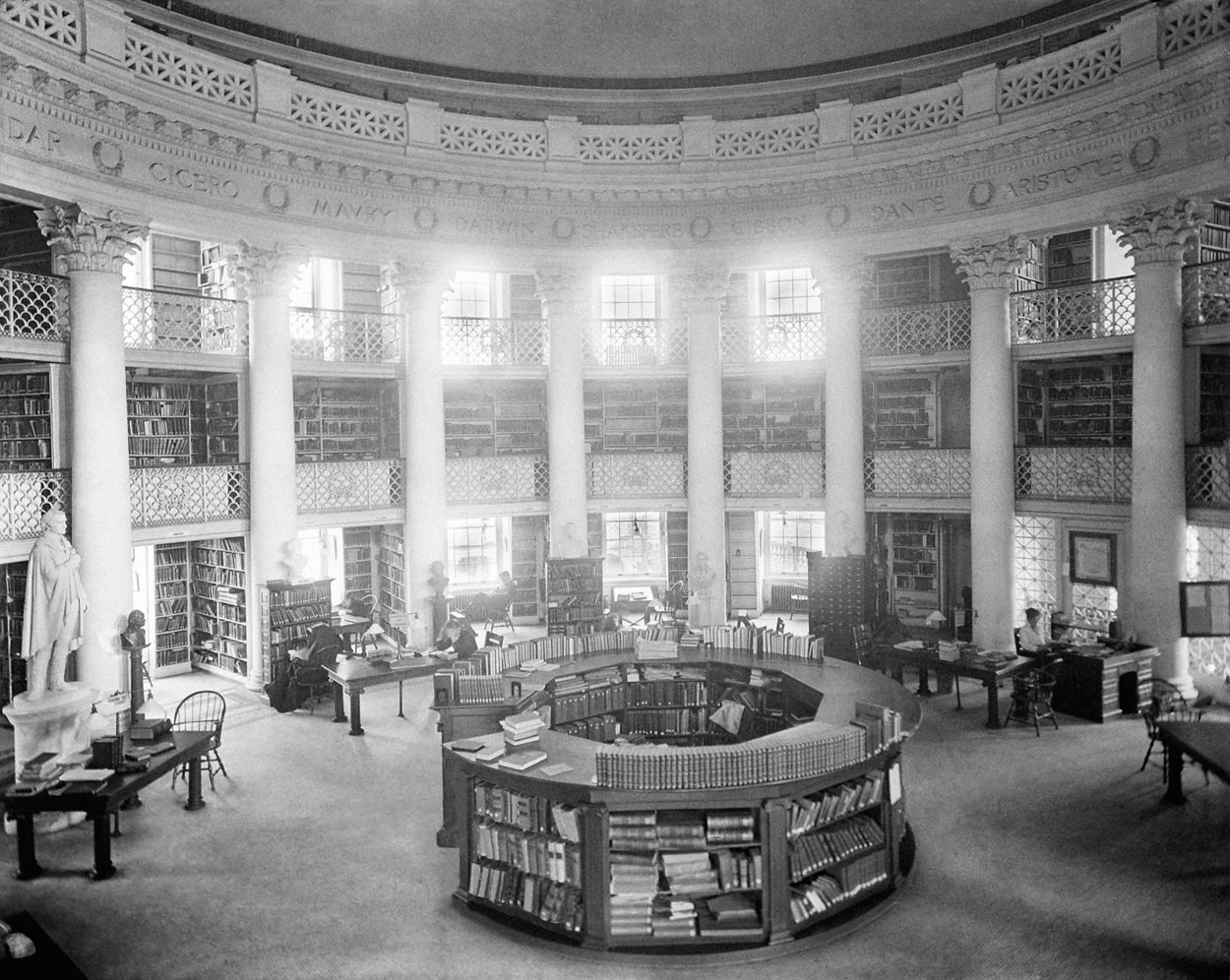
The history of the University of Virginia can be divided into three chapters, each marked by the construction of a library.
The Rotunda
The first chapter was the building of the Rotunda, the first library at UVA. Unlike other universities of its era, the University of Virginia was built around a library, rather than a chapel or other religious structure. This was symbolic of the central importance of knowledge to this university, and Thomas Jefferson himself was deeply engaged in selecting the materials that made up that library’s original collection, and in developing the system by which it would be organized. The Rotunda served as the University Library for over 100 years, until collections needs outgrew the Rotunda's capacity.
The building of a new main library
The building of what was then called Alderman Library, in 1937, marked the second important chapter of UVA’s history, as it was a response to the faculty’s demand for the volume and type of current information necessary to function as a research university. At the same time, the University committed to a very significant increase in annual spending on collections. Those collections, in turn, were housed in the stacks. Originally closed to most patrons, these stacks were laid out to maximize the storage of printed matter, and the stacks themselves were part of a state-of-the art integrated book storage system (the Snead Book Distributor) that included a book conveyor belt. Librarians picked requested titles from the shelves and dropped them on the belt, and they were delivered to the circulation desk.

Library renovation
The renovation, beginning in 2018, marks the third chapter in the University’s history, and the choices we make in that renovation will say a great deal about what we think the future of research and scholarship will be, as well as what we think a great university needs in order to support those activities.
We also need to replace the plumbing. Those systems — the plumbing, as well as the wiring, the heating and air conditioning — are at the point of failure. Some of these systems are original to the building and are approaching 80 years of operation. Frequent fire alarms (and building evacuations) are the result of small failures in these systems, but they are also a reminder that there is no fire suppression in the building — no sprinkler systems in those (now open) stacks full of paper. The collections are at risk, but there are also real life-safety issues throughout the building, and these must be addressed.
The general plan is to maintain the building’s character and its shell, and replace the interior with new construction having LEED-quality systems and housing collections and services that will support the University's mission in its third century. New construction opening onto University Avenue will be the face of a Library that is sustainable and future-oriented, with elements of architectural diversity that respect the past, but are designed to accommodate change. We expect that the whole of a renovated space will keep the large windows, the high ceilings, and the contemplative character that all of us enjoy in the original building.
Academic libraries serve multiple purposes for multiple constituencies, and we work diligently with the University community to understand and balance those needs. Students, faculty, and library staff are all deeply vested in getting this balance right, and producing a building that allows for growth in collections, for the evolution of knowledge, and for change over time, as the building learns from its users. The expansion of Ivy Stacks, completed in 2017, was a key precursor of this project, as it allows the temporary off-site storage of items in the collection, with new preservation-quality HVAC. But browsing collections will return, and the new building, like the Rotunda before it, will reflect thoughtful organization of resources, interspersed with space to use those resources. And, like our main library today, the new building will offer many different environments for study — from bookish spaces like the McGregor Room to spaces organized around other kinds of information or for other purposes, allowing for quiet study, group study, and social interaction.
On March 1, 2024, UVA's Board of Visitors voted to name the renovated library "The Edgar Shannon Library," after the University's fourth president.
